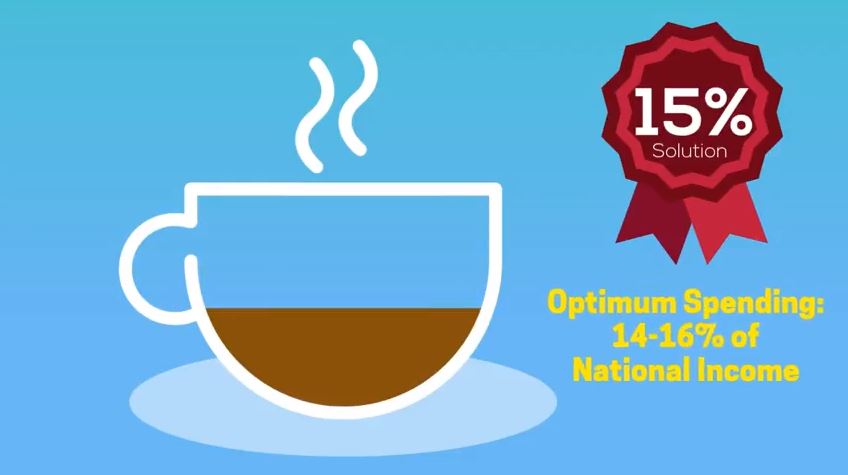 On the heels of the news that the national debt has surpassed $22 trillion, the Pacific Research Institute today recommended reforms to bring spending under control, reduce the national debt and maximize economic growth in the latest report in its Beyond the New Normal series.
On the heels of the news that the national debt has surpassed $22 trillion, the Pacific Research Institute today recommended reforms to bring spending under control, reduce the national debt and maximize economic growth in the latest report in its Beyond the New Normal series.
“Just last week, as we learned that the national debt had grown to $22 trillion, Congress passed another massive $328 billion spending package,” said Dr. Wayne Winegarden, PRI Senior Fellow in Business and Economics, and author of Beyond the New Normal. “Washington ignores runaway spending and our growing national debt at its peril. The time is now to start moving toward a more sustainable federal spending approach like the ’15 Percent Solution’ that will get America’s debt under control and help us realize 3 percent or higher growth rates each year.”
The report released today, “Realizing the 15 Percent Solution”, outlines the major reforms to entitlement programs and spending priorities that will be required to establish affordable federal budgets and reach the ideal 15 percent spending level to optimize economic growth.
Click here to download a copy of “Realizing the 15 Percent Solution”.
“Realizing the 15 Percent Solution” recommends spending reforms in 6 broad areas:
- Social Security Reform: Social Security is a major driver of unaffordable government spending. By eliminating the practice of over-adjusting benefits for inflation and adjusting the full retirement age, spending can be reduced by 13.5 percent by 2044.
- Reforms to Health Care Programs: Winegarden recommends a two-part strategy of reforming Medicare and Medicaid to move toward a market-based system and implementing broad-based health care reforms. Holding annual federal health care spending growth to 4 percent can reduce Medicare spending by 43 percent and other health care spending by 42 percent by 2044.
- Income Transfer Programs: Eliminating corporate welfare and reforming more worthy income support programs like public assistance programs could reduce spending in this area by more than half by 2044.
- Defense Savings: Capping the growth in military spending to a defined-level of growth and enabling the reprioritization of existing military spending could reduce annual military spending to 3.0 percent of national income (down from 3.7 percent) by 2044.
- Interest Rate Savings: Interest costs will nearly triple by 2044 unless federal spending is brought under control. But an orderly sale of federal assets can stabilize the national debt and interest costs. This could reduce annual interest costs to 0.6 percent of national income by 2044.
- Hard Budget Cap on Remaining Discretionary Programs: A budget cap should be instituted on the remaining 18 percent of the budget. However, spending should be prioritized so important needs like infrastructure receive more funding, while other programs receive less or are eliminated. The cap could reduce spending in this area from 4.1 percent of national income to 2.3 percent by 2044.
“Realizing the 15 Percent Solution” builds upon the previous report, “The 15 Percent Solution: Defining the Affordable Level of Government,” which argued that restricting spending to a growth-maximizing level of 15 percent of national income would mean more money to invest in jobs, and 3-4 percent annual growth rates becoming a regular occurrence.
In 2017, PRI released Parts 1-4 of Beyond the New Normal series, written by Winegarden and Niles Chura. The series makes the case that future U.S. economic growth can meet – or exceed – past growth trends if the right economic policies are adopted. Click to read Part 1, Part 2, Part 3, and Part 4 of the series.
Dr. Wayne Winegarden is a Senior Fellow in Business and Economics, and Director of the Center for Medical Economics and Innovation at Pacific Research Institute.
